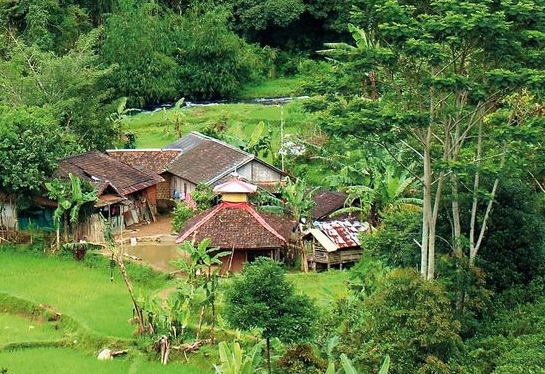
Center for International Forestry Research

Collaborating across landscapes and institutions to improve research outcomes
Forestry, biodiversity and agricultural institutions have traditionally operated separately, despite working on many shared challenges such as food security, climate change and deforestation.
Cross-cutting initiatives such as sentinel landscapes offer a new, unprecedented opportunity to work with a range of partners worldwide on long-term monitoring of forestdependent people and tree-based ecosystems.
Alain Billand
CIRAD
CIFOR and its CGIAR partners have been advocating a shift to move research out from sector boundaries to an integrated landscape level to improve knowledge and outcomes for forests, people and livelihoods.
CIFOR, Bioversity International, the International Center for Tropical Agriculture and the World Agroforestry Centre are currently implementing the CGIAR Research Program on Forests, Trees and Agroforestry.
The program is now in its second year of implementation and is on track for its outputs and knowledge generation targets.
This year, the Agriculture Research for Development Centre (CIRAD) became the first non-CGIAR centre to join the program’s steering committee, bringing a wealth of expertise on development and agricultural research.
“CIRAD’s position within [the program] acknowledges its long-time collaboration with CIFOR and witnesses that CRPs are an effective instrument of the CGIAR reform in its relations with partners,” said Pierre Fabre of CIRAD.
“The main point of the CGIAR reform,” says the program’s Director, Robert Nasi, “was that it was perceived there were too many barriers between institutions and not enough cross-disciplinary, collaborative research taking place . . . There are now joint collaborative plans between the core centres . . . and our budget is being directed towards research on emerging, cutting-edge topics. Having CIRAD on board will only enhance this fruitful partnership.”
A key part of the collaboration is the sentinel landscapes approach. In these landscapes, scientists measure change by applying similar methodologies to gain a deeper understanding of how these areas interact with global processes. Landscape research looks at forests in connection with other types of land and has the potential for multiple levels of impact. Local people will benefit from an increased understanding of natural resource management, while at the national and global levels, scientists will produce policy-relevant research to inform decision making.
Watch our video “Papua: Planning a better future” at cifor.org/collaborating
